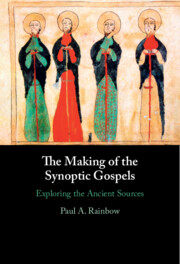Book contents
- The Making of the Synoptic Gospels
- The Making of the Synoptic Gospels
- Copyright page
- Contents
- Preface
- Abbreviations and Symbols
- Note on Color Tables
- 1 Introduction
- 2 State of the Question
- 3 Testimonies of Galilee: Q
- 4 Testimony of the Leaders at Jerusalem
- 5 Embryonic Mark and Matthew
- 6 Luke’s Preparation
- 7 Luke
- 8 Mark
- 9 Matthew (Greek)
- 10 Independence
- Appendixes
- Bibliography
- Indexes
- References
Bibliography
Published online by Cambridge University Press: 21 November 2024
- The Making of the Synoptic Gospels
- The Making of the Synoptic Gospels
- Copyright page
- Contents
- Preface
- Abbreviations and Symbols
- Note on Color Tables
- 1 Introduction
- 2 State of the Question
- 3 Testimonies of Galilee: Q
- 4 Testimony of the Leaders at Jerusalem
- 5 Embryonic Mark and Matthew
- 6 Luke’s Preparation
- 7 Luke
- 8 Mark
- 9 Matthew (Greek)
- 10 Independence
- Appendixes
- Bibliography
- Indexes
- References
- Type
- Chapter
- Information
- The Making of the Synoptic GospelsExploring the Ancient Sources, pp. 351 - 369Publisher: Cambridge University PressPrint publication year: 2024

